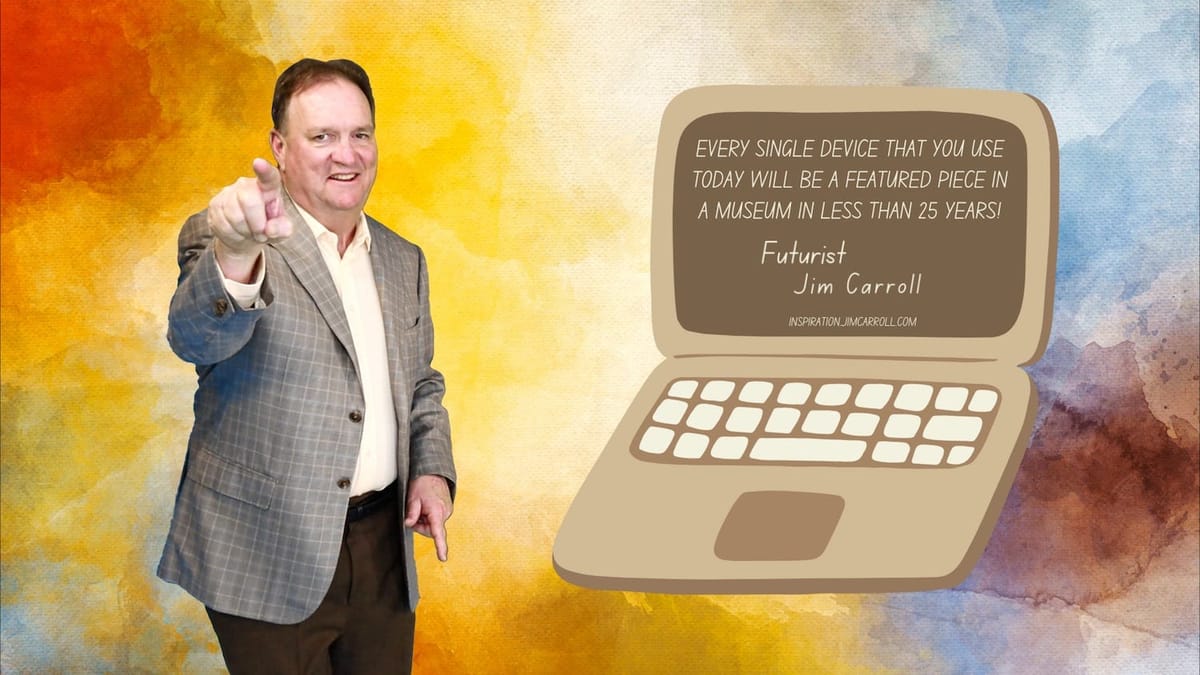We are surrounded by modern obsolescence; the leading edge is already ancient; the modern is always an antique!
I have in my office an Mp3 player from 1997; it could hold 4 songs. When out for a run, I had to make sure I loaded up the songs I really liked! Today? No one even buys a separate Mp3 device, because our phones have become the basis for the technology, and online streaming like Tidal and Spotify have rendered the concept of a digital music file irrelevant.
Your car dashboard of today is already sending the resale value of your vehicle into the tank - who wants a dashboard from 2018? We are seeing this collapse in value because the vehicle already reflects automotive design thinking of 2010 - automotive companies are having a hard time keeping up with what's involved in the shift to a technology-dominated future. Who wants an old car that is just 2 years old when it's already out of date? (Not to mention that as a gas-guzzling relic in the era of electric cars, it's even less desirable!)
The fancy Internet-connected thermostat you use to manage your heat and air-conditioning consumption? It's but a primitive infant in light of the forthcoming home-renewable-microgrid management technology that is coming at us - the next billion-dollar opportunity. The iPhone-connected blood pressure cuff you use to manage your metrics? It will be replaced tomorrow by smart skin patches or connected contact lenses that will do such measurements silently in the background as a part of your whole-body-monitoring healthcare system. The fact is, we live in a world in which everything we use today will be old and out-of-date tomorrow.
I first caught notice of this trend in 2003, when my young sons would laugh at some of the things we had around the house. To them, many of the things that were a part of my life were to them, something from the olden days. I wrote it into a blog, "10 Things My Kids Think Are From the Olden Days."
Hence was born a story I would tell on stage for the next decade and beyond.
Inspired by that thinking, I wrote another post, "Understanding the velocity of innovation - take the "10 Things Test!"
In that post, I suggested that people take a look at some of the things that are a part of their life, and imagine how different they might be in the future. Much of what I covered in that article has yet to come true, but much of what I wrote is closer to reality today than it was yesterday. But check the last item on the list - it seems that I was predicting the Great Resignation. (I was, and was already predicting it back in 1997!)
The view outside. For more of us, it won’t be of office towers and concrete jungles, but rather, our yards, the lake we cottage at, or the beach we play on. Ten years out, the concept of “what do you do for a living” will have changed completely to the idea of “what do you like to do?” as the itinerant career begins to dominate.
Why is it important to think about the issues of instant obsolescence? As I wrote into my Olden Days article:
One of the most important roles for any executive today is ensuring that the organization is strategically positioned to deal with relentless, ongoing change.
Everyone is faced with rapidly evolving business models, new and unique customer demands, heightened competition, rapid product development and even faster product obsolescence, and increasing career specialization, not to mention dramatic rates of knowledge growth. It is important to be cognizant of the potential impact of all of these trends, in order to clearly assess how an organization should be responding to change.
It is important that you don’t become complacent about the rate of change that envelopes us today. That’s why it can be very useful to have a barometer that helps to measure the rate of change.
Expect change - expect velocity!

